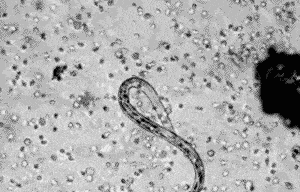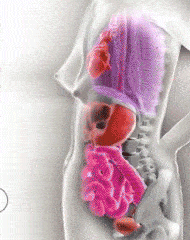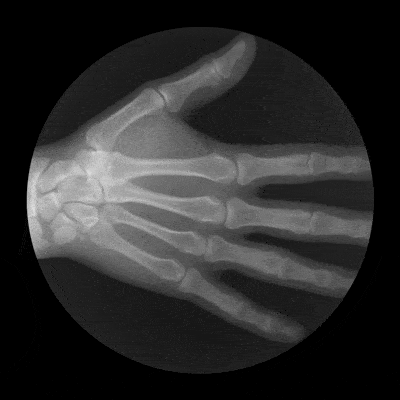The human body is a complex biological machine, where each part of the system works in tandem, from cells to whole organs, to keep us alive. When something in the system goes astray or downright haywire, disease creeps in. I’m not going to go into biological details on how the human body works – there are thousands of volumes, each capable of explaining it better than I ever will. Instead, I’d like to show you some genuine science eye candy that will help you visualize how things like the immune system or blood cells function.
White blood cells attacking a parasite @ 450x
Time-lapse video of bone marrow–derived eosinophils and a C. elegans dauer larva over the course of 80 min. Images were acquired once every 30 s and are displayed at a frame rate of 15/s.
A typical human red blood cell cycle in the circulatory system.
This animation occurs at real time (20 seconds of cycle) and shows the red blood cell deform as it enters capillaries, as well as changing color as it alternates in states of oxygenation along the circulatory system.
How a human baby’s face develops in the womb.
The face starts off as a pair of tissue mounds, called branchial arches. They form from outside in; from the sides inward towards the middle. Through a transforming process that lasts four and half months into pregnancy, the baby’s face will gradually grow nostrils, eyes, eyelids, lips and so on.
Cross section of a human body from top to bottom.
No humans were sliced in the production of this video. You have functional magnetic resonance imaging (fMRI) to thank for that. In total, 1,878 images were taken and displayed in rapid succession to show the internal structure of the human body.
How pregnancy shifts and moves the mother’s internal organs to make room for the baby
A lot of pregnancy symptoms can be blamed on hormonal changes, but a good number of them are also the direct result of having a baby take up all that room inside your body – room that used to belong to your lungs and stomach and digestive system. This GIF shows how the lungs, bladder or intestines are squeezed by the growing baby.
X-ray of human hand clenching into a fist
A beating heart

Every day, your heart beats about 100,000 times, sending 2,000 gallons of blood surging through your body. Although it’s no bigger than your fist, your heart has the mighty job of keeping blood flowing through the 60,000 miles of blood vessels that feed your organs and tissues
The evolution of man from bacteria












